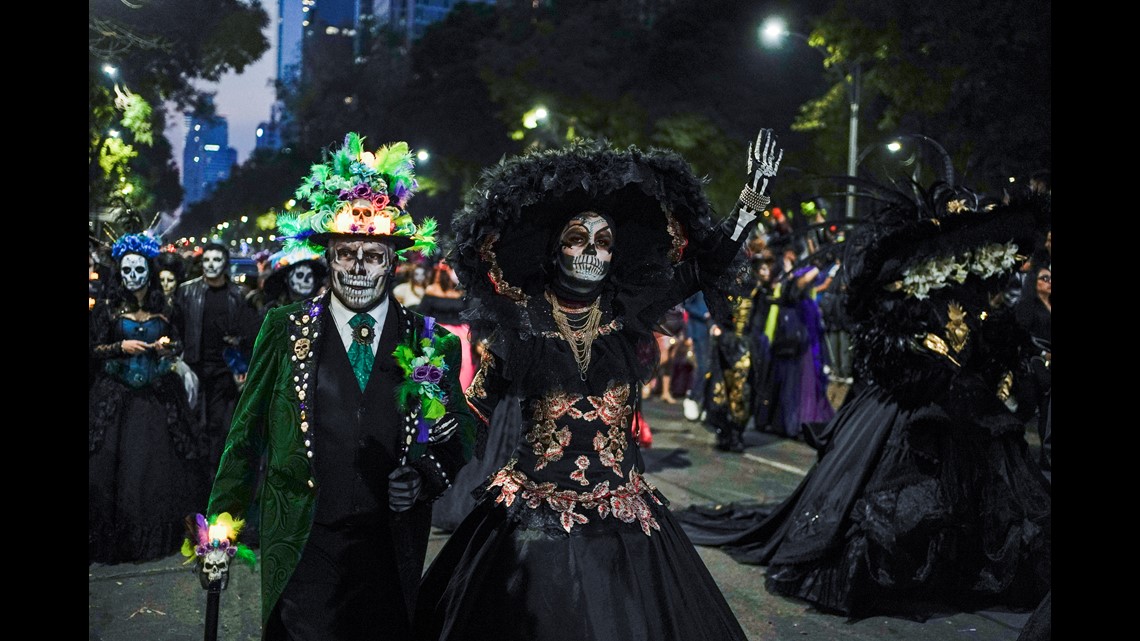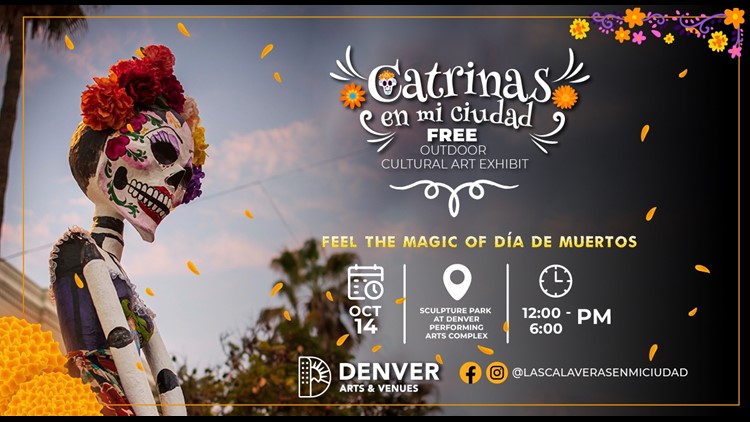DENVER — Although the official Day of the Dead celebration is still a few weeks away, events centered on the holiday begin in Denver this weekend.
"Catrinas en mi Ciudad," an outdoor art exhibit, is a free, family friendly event where attendees will be able to enjoy musical performances, face painting, sugar skull decorating and food. It will take place from noon to 6 p.m. Saturday at Sculpture Park at the Denver Performing Arts Complex.
Inspired by Mexico's Día de Muertos, 30 “larger-than-life” Catrinas imagined and created by internationally acclaimed costume and set designer Ricardo Soltero will be on display at the park. According to a release, the immersive experience will activate all the senses with a culturally competent lens and showcase the beauty that exists in one of Mexico’s most celebrated holidays, one which celebrates life.
Soltero is a Los Angeles-based artist known for his great talent behind major productions and cultural celebrations in California, such as the annual Día de Muertos event at Hollywood Forever Cemetery and the Bésame Mucho Music Fest.
Know before you go:
- Pack a picnic blanket or lawn chairs to enjoy a day at Sculpture Park.
- Pets are not allowed inside the exhibit areas. Service animals are allowed.
- Please arrive early and consider alternative transportation or the many lots and garages nearby.
This event is supported by Denver Arts & Venues.
Día de Muertos, known in English as Day of the Dead, which takes place Nov. 1 and Nov. 2, is not the Mexican Halloween. It is a Mexican holiday celebrated by people from Latin American countries and the United States to honor their ancestors.


La Catrina is an internationally recognized symbol for the Day of the Dead. Many relate it to the illustrations of José Guadalupe Posada, who modernized her in 1910, but her existence goes much further back.
According to National Geographic, La Catrina is the Aztec figure Mictecacihuatl, the death goddess of Chicunamictlan. Her role was to watch over the bones of the dead.
During pre-revolutionary Mexico, Posada used La Catrina as a way to criticize upper-class society and specifically described women in high society.
His figures were depicted with skulls instead of faces because "the reduction of every person to bones, no matter of time, place, class or deed, gave Posada's images a homogenising quality, the apparent message being ‘underneath, we are all the same,’" according to National Geographic.
Today, La Catrina is integrated as an emblem of the Day of the Dead celebration in different ways. According to National Geographic, her elegant dress represents celebration, and her smile reminds us that there is comfort in accepting the inevitability of death and that the dead should be commemorated.
The iconic Catrina has served as an influence for notable Mexican artists such as Diego Rivera and José Clemente Orozco. It can be found in the center of Rivera's mural Dream of a Sunday Afternoon in Alameda Park, next to Posada.
SUGGESTED VIDEOS: Colorado Guide



